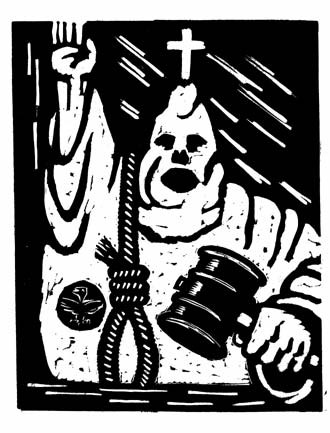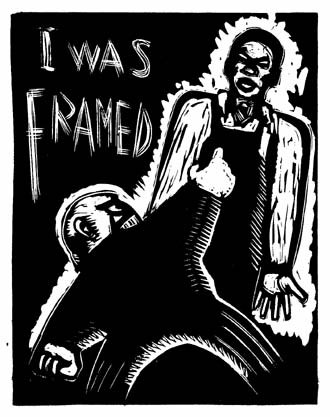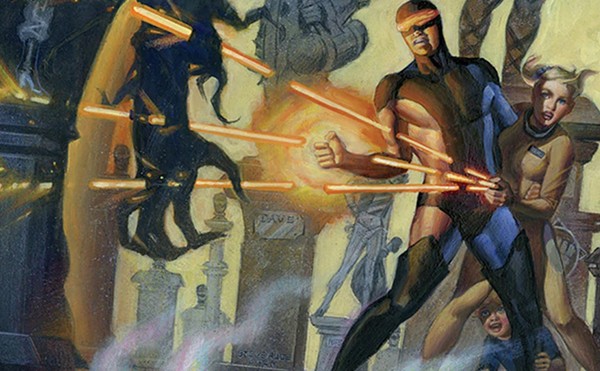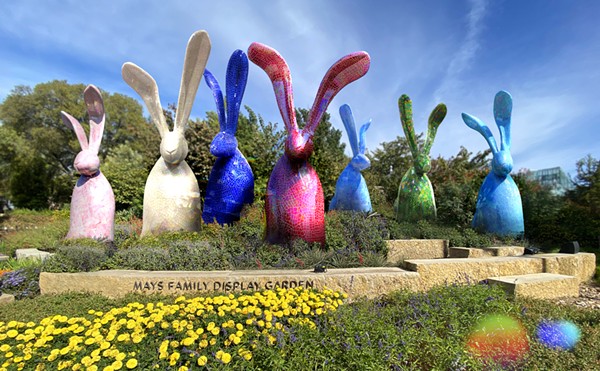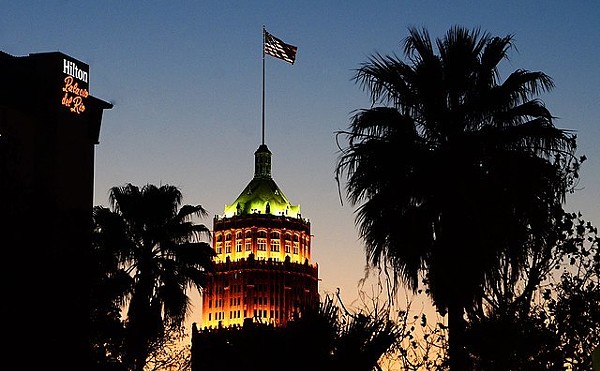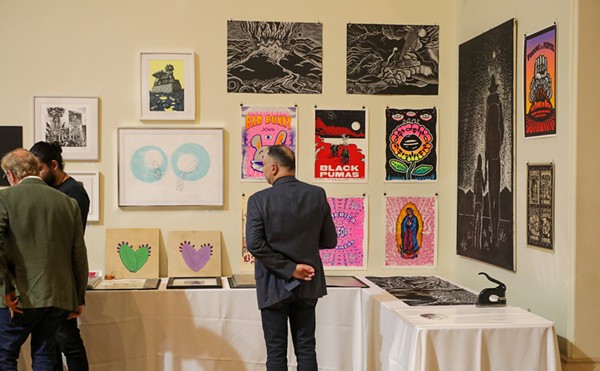| A reproduction of linoleum-cut artwork in Scottsboro, Alabama |
Before, during, and after the early 20th century, thousands of blacks were lynched: hung, burned, shot, tortured, mutilated, their remains parceled off and sold as souvenirs, their pictures available on postcards. These were not isolated, clandestine acts of racial violence, but visible, public, family affairs that reminded blacks of the consequences they faced, should they "step out of line" and challenge the world of Jim Crow.
Yet lynching was not only a Southern phenomena, nor were blacks the only victims of this form of mob violence - Mexicans throughout the Southwest stood falsely accused of the same crimes, with the same devastating results. Today it is difficult to comprehend the scope and scale of such outright terrorism, where bodies were left hanging, visible to passersby across the racial spectrum. To understand this history and its relevance to the present (racial profiling, police brutality, and the death penalty echo the sentencing of "Judge Lynch"), we need to confront America's past.
| SCOTTSBORO, ALABAMA: A STORY IN LINOLEUM CUTS By Lin Shi Khan & Tony Perez Edited by Andrew Lee New York University Press $18.87, 150 pages ISBN: 0814751768 |
The ILD, and later the Scottsboro Defense Committee -a tenuous alliance of the Communist Party (whose Southern membership was predominantly African-American), the National Association for the Advancement of Colored People, the American Civil Liberties Union, and other supporters - took the particulars of the case far beyond the confines of the Alabama legal system as a means to expose the injustice of the American South. In the era of pecan sheller strikes and auto worker unionization, an emerging, depression-era precursor to the Civil Rights movement saw protests and demonstrations throughout the country and around the world publicize the particulars of the case, resulting in letters of support, poems, songs, and art demanding the release of the Scottsboro defendants. It is within this context of repression and revolution that Lin Shi Khan and Tony Perez created Scottsboro, Alabama: A Story in Linoleum Cuts.
Initially printed in 1935, the outcome of the subsequent trials remained unknown when Khan and Perez completed their volume. Unseen for more than half a century, Scottsboro, Alabama's linoleum prints tell the harrowing story of the Scottsboro case through simple, effective, and easily reproducible illustrations whose message is not weighed down by text; presumably, this was to reach as wide an audience as possible, across populations with varying degrees of literacy and access to published material.
Khan and Perez conclude with several powerful images of racial unity and worker solidarity - an appeal for its continuation as much as a reminder of its existence. If history wounds it can also heal. To insure that the injustices of the past do not continue to inflict their suffering upon subsequent generations, we must first address, acknowledge, and confront the worst (in this instance, white supremacy supported through legal and extralegal means) as we value and celebrate the best (the global organizing across race and class barriers undertaken on behalf of the Scottsboro defendants), all the while recognizing our own potential to transform the world. •

